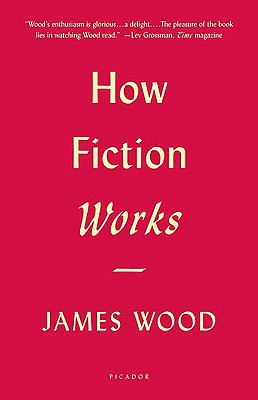
How Fiction Works, by James Wood.
When it comes to books on the craft of writing, I tend to gravitate to titles that teach through close readings of literature. Maybe it has to do with the grad program I attended, or that when I’m caught up in a book, I’m both figuring out my response and wondering about others’ responses too. You might prefer a more nuts-and-bolts approach, with straightforward advice and tips, but learning from the close readings of writers one admires seems to me ideal—like having one’s stories and understanding them too. After all, the cultivation of one’s reading life is as much the goal as is writing good sentences, pages, books.
How Fiction Works is organized around a series of close readings, with chapters structured around topics of writing craft. There is the obviously “Dialogue,” for example, but there are broader examinations, too, such as “Flaubert and the Rise of the Flaneur”—which is one of my favorites. This particular chapter focuses on point of view, or more specifically, how a character’s thoughts (walking down the street, for example) effect the expository digression that exposes character, setting, external detail. As Wood observes, the internal view demands an imposition of a style, an approach to how one aims to treat the language that describes a character’s unfiltered thoughts. Will it reflect the writer’s sensibility or interest in language, or simply convey the facts? Here is Wood on the effect of the object of his examination, Flaubert and his discursive style:
…he is at once a realist and a stylist, a reporter and a poet manqué. The realist wants to record a great deal, to do a Balzacian number on Paris. But the stylist is not content with Balzacian jumble and verve: he wants to discipline this welter of detail, to turn it into immaculate sentences and images…
That blend of examination—which often feels so precise as to be surgical (in the best way)—along with Wood’s critical eye, make this book a master class in close reading.
—Lauren Alwan

